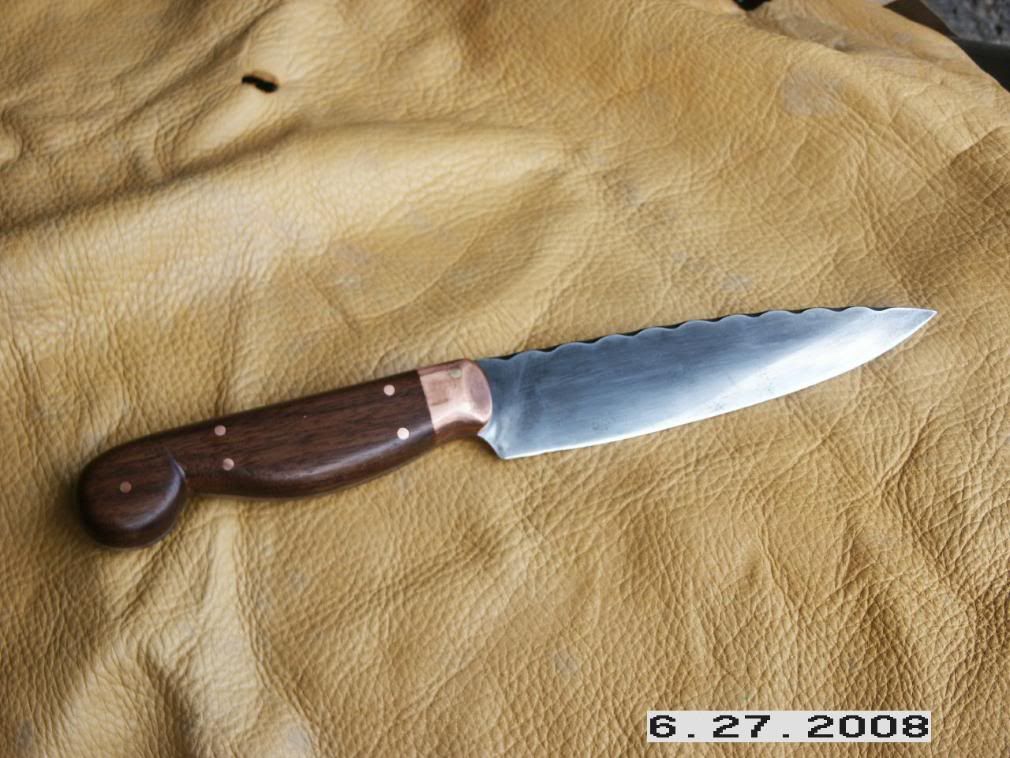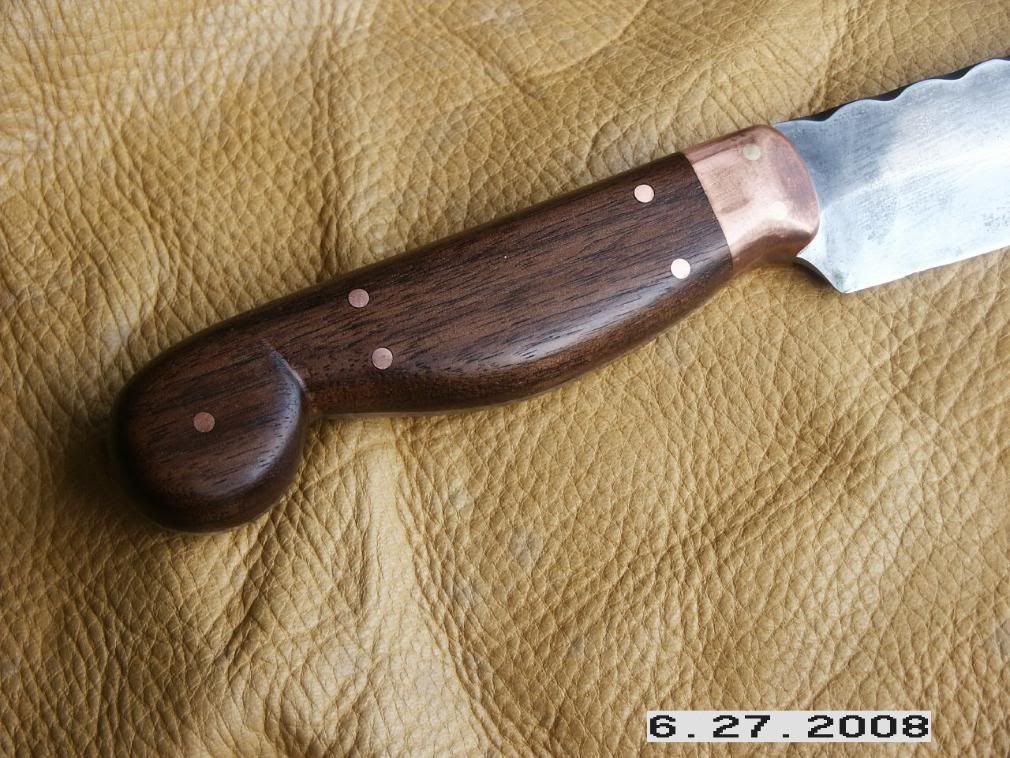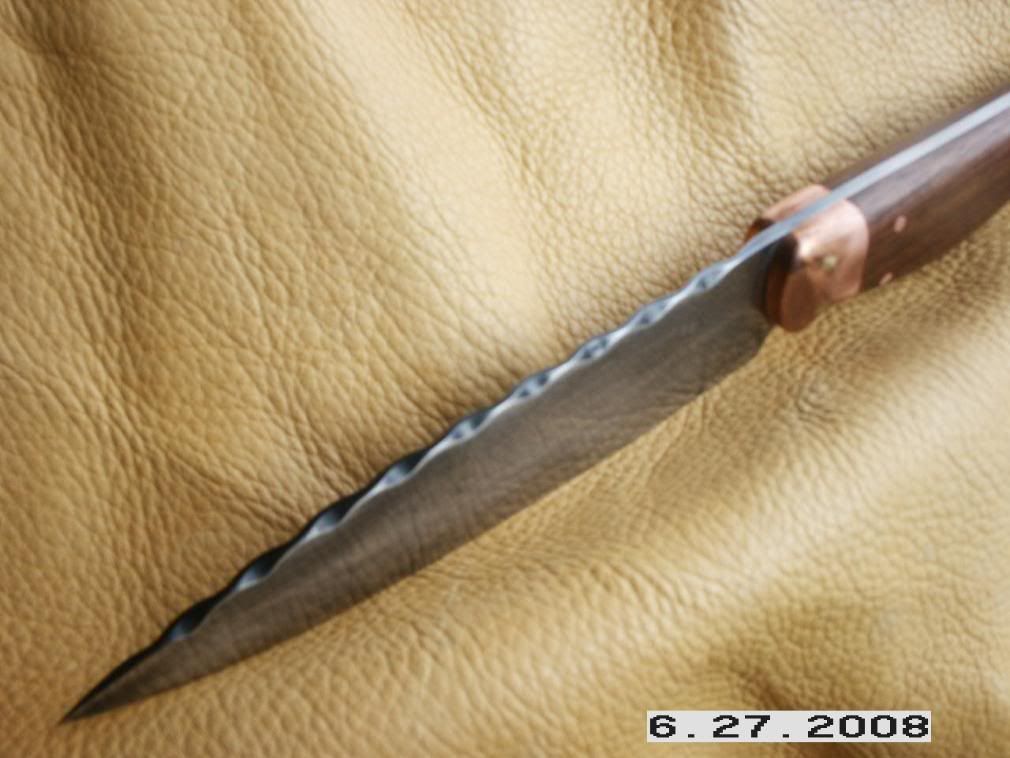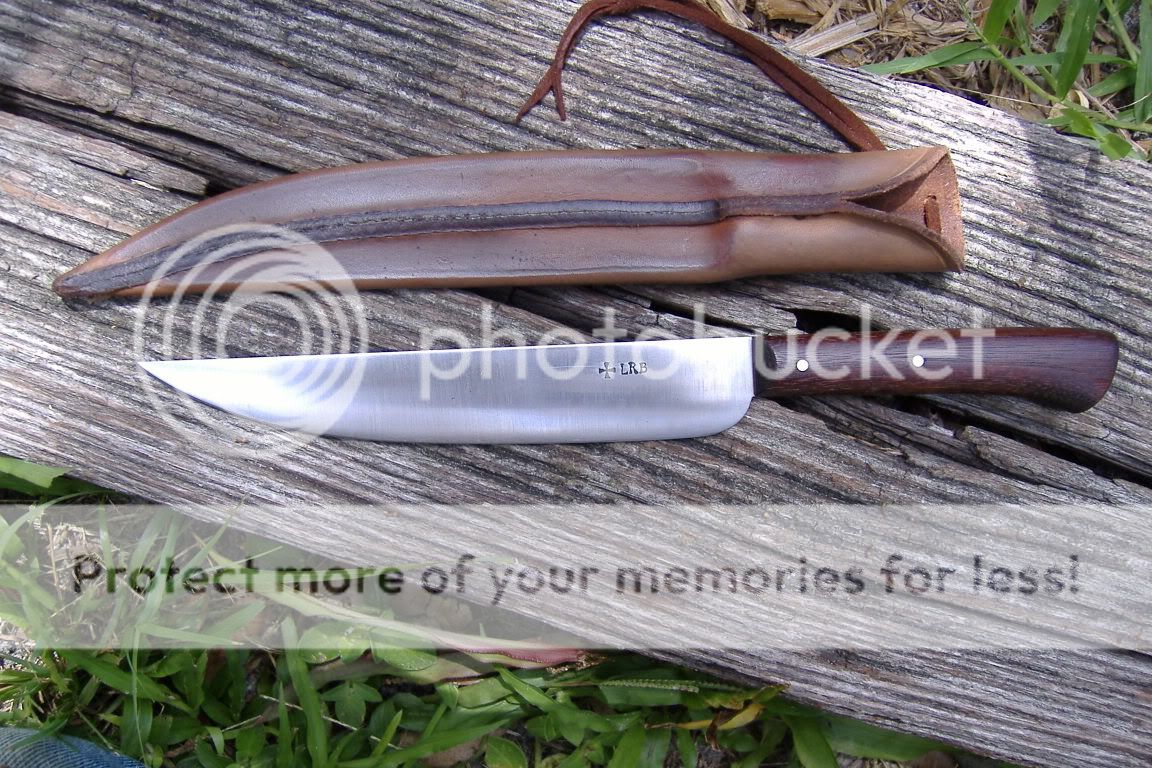Pichou, I think Mark Baker is responsible for the name of that style. As incorrect as it may, or may not be, it seems to have caught on with many. As you probably know Baker had one made that was loosely copied after one in Madison Grant's book, and Grant describes it as a French trade knife. Put side by side, it would not be a stretch to call the above knife, also similar to the one in Grants book. Grant dated it at 1790, to 1865. Of course, we all know Grants dating was based on much speculation. I see no reason that, that type could not be dated earlier, or at least accepted for re-enactment, with some exceptions to the pins, and bolster material, and the number of pins, as on the one above. Really, there are just too few surviving, date documentable knives from the 18th c. I see many, so called 18th c. style knives offered by big name makers, that cannot document the majority of their styles except by general features, and even some of the accepted features are questionable. As a maker myself, there is just not enough to go on, with only a few exceptions. I have yet to see a genuine English trade knife that is complete, although I don't get to travel much. The Frenchies are out there. The Doran styles. Dutch, and their neighbors. Where are all the English knives. Most all of todays knifemakers use speculation. That's about all we can do if we want to be competetive, or else we would all be doing the same knives with different names on them. How many documentable 18th c. blacksmith made knives have you seen covered with forge scale, hammer marks, crooked as a snake, and then decorated with pewter bands, bolster, ect.? I would guess none, but they are prevalent now, and completely accepted. A good smith would never have made such a blade, and a farmer smith would not have bothered with the pewter. How many originals have you seen with pewter bolsters? I would have to look again, but I don't recall any, that are 18th c. documentable. Unless a knife just has too many modern features, I think you have to give us makers a little artistic license. Also, if I remember correctly, The guy that made the one above is pretty much a beginner, but doing remarkable work. As good as many veterans I know of. He just needs to do more research on early knife features. Acually, I don't recall him saying that was an 18th c. French trade knife, just said it was a French trade knife. Would you bet your life that one much like it never existed? Pichou, if you can point out some good 18th c. knife sites for me, other than New France, I would be much obliged. I research as much as I can, but it is usually confined to the computer, and a few books.











